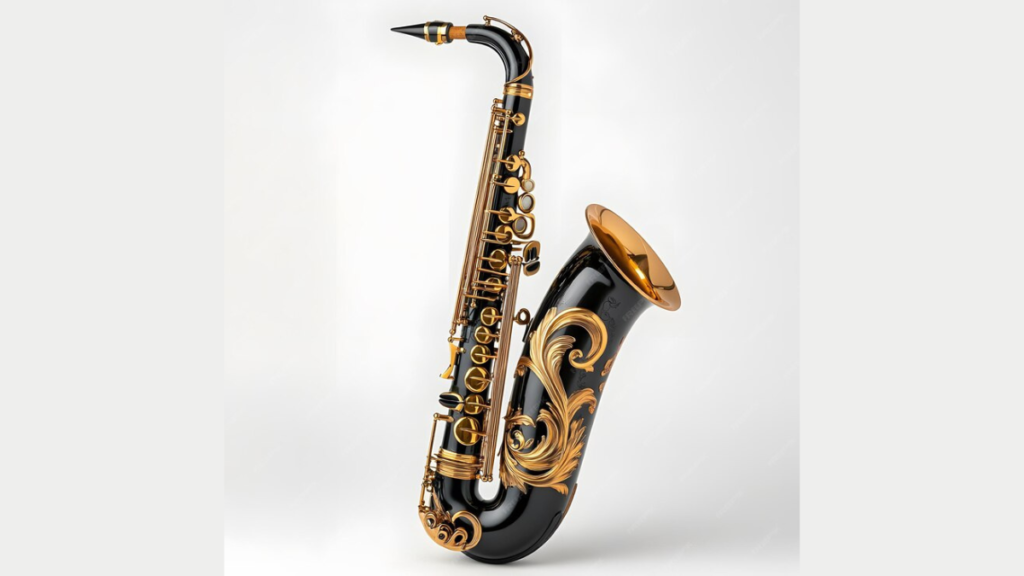The English horn, despite its name, is neither English nor a horn. This fascinating woodwind instrument has a rich history and a unique sound that sets it apart from other orchestral instruments. Often overshadowed by the more familiar oboe, the English horn plays a vital role in symphonies, chamber music, and film scores. In this article, we will explore the origins, characteristics, and significance of the English horn, as well as delve into how it is played, its role in different music genres, and much more.
What is the English Horn?
The English horn, also known as the cor anglais, is a double-reed woodwind instrument in the oboe family. It is larger than the oboe and has a lower pitch, typically sounding a perfect fifth lower. The name “English horn” is somewhat of a misnomer, as it originated in continental Europe, not England, and the word “horn” refers more to its shape rather than its classification.
Like the oboe, the English horn uses a double reed to produce sound, which gives it a rich, reedy tone. Its curved shape, complete with a bulbous bell, contributes to its distinct appearance and tonal quality. The instrument is commonly used in orchestral and chamber music to create mellow, haunting sounds, often conveying emotions like sorrow or longing.
History and Evolution of the English Horn
The English horn’s history is a fascinating tale of evolution. It first appeared in the 18th century, originating from the oboe da caccia, an earlier version of the oboe used for hunting music. The instrument evolved to become slightly larger and developed a bulbous bell, which gave it its characteristic rich, warm tone.
The term “cor anglais” (French for “English horn”) is believed to have stemmed from a mistranslation or misunderstanding. The instrument was popularized in Germany and France, not England, and the word “anglais” may have been a corruption of the word “anglé,” meaning “bent” in French, referring to its curved shape.
During the Classical and Romantic periods, composers like Hector Berlioz, Antonín Dvořák, and Richard Wagner started incorporating the English horn into their orchestral works. Its distinct, plaintive tone was used to evoke deep emotions and atmospheres, making it a staple of romantic and expressive music.
The Structure and Sound of the English Horn
The English horn’s design is what gives it its distinctive sound. Made primarily from wood, usually grenadilla or rosewood, the English horn has a conical bore and a bent metal tube, called the bocal, that connects the reed to the body. The reed, much like that of the oboe. Is hand-crafted by the player and plays a vital role in shaping the instrument’s sound.
The instrument’s body is longer than the oboe, which allows for the production of lower pitches. The bulbous bell at the end of the instrument helps to enhance its tonal richness and projection. The sound of the English horn is often described as warm, full, and slightly melancholic. Its ability to express a wide range of emotions, from deep sorrow to lyrical beauty. Makes it a favorite among composers seeking to convey introspective or reflective moods.
How to Play the English Horn
Playing the English horn is similar to playing the oboe but requires a slightly different technique due to its size and pitch. Musicians use a double reed, which is placed between the lips and vibrated by blowing air through it. The player’s breath control and embouchure (mouth shape) are crucial in producing a good tone.
Fingering on the English horn is almost identical to that of the oboe, but due to its larger size and lower pitch, it requires more breath support. The English horn is a transposing instrument, meaning that when the player reads music written in the key of F, it sounds a fifth lower than written. This requires musicians to adapt their fingerings and embouchure for accurate pitch and intonation.
It takes years of practice to master the English horn, especially in creating a smooth, even sound across its wide range. Players must also develop the skill to craft their own reeds, as each musician’s embouchure and playing style may require subtle differences in reed shape and flexibility.
The Role of the English Horn in Orchestras and Music
The English horn plays a unique role in orchestras. Often used for solos or passages that require a darker, more melancholic sound. While it is not typically part of every orchestral composition. It is frequently called upon in symphonies and operas where its distinctive tone is needed to convey specific emotions.
In orchestras, the English horn is usually played by the second oboist, who switches between the two instruments as needed. This requires the musician to be proficient in both. As the demands of the music can change rapidly from piece to piece.
Some of the most famous pieces featuring the English horn include Antonín Dvořák’s “New World Symphony,” where it plays the memorable “Goin’ Home” theme, and Hector Berlioz’s “Symphonie Fantastique,” where it is used to evoke a pastoral, bucolic setting.
Famous English Horn Compositions
The English horn has been featured in numerous iconic compositions throughout history. Thanks to its ability to convey deep emotion and atmosphere. Some well-known works that include prominent English horn solos are:
- Antonín Dvořák – Symphony No. 9 (From the New World): The English horn’s solo in the second movement, Largo, is one of the most famous and widely recognized English horn passages in the orchestral repertoire. The melody is often referred to as “Goin’ Home,” though this name comes from a spiritual arrangement based on the symphony.
- Hector Berlioz – Symphonie Fantastique: In the third movement, Berlioz uses the English horn in a dialogue with an off-stage oboe to evoke a pastoral, serene atmosphere. This scene represents a shepherd’s pipe echoing through the countryside. And the English horn’s plaintive tone is central to the imagery.
- Richard Wagner – Tristan und Isolde: Wagner used the English horn’s to heighten the emotional intensity of his operas, particularly in this work. Its mellow, haunting tone underscores the tragic love story and enhances the depth of the music.
- Jean Sibelius – The Swan of Tuonela: This tone poem by Sibelius places the English horn at the center of the narrative, where it represents the swan gliding over the waters of Tuonela, the land of death. The solo is long and lyrical, showcasing the instrument’s expressive capabilities.
Differences Between the English Horn and Oboe
Although the English horn’s and oboe are closely related, they have several distinct differences in terms of size, pitch, and role within an orchestra.
- Size and Shape: The English horn’s is longer than the oboe, which allows it to produce lower pitches. It also has a distinctive bulb-shaped bell and a horn’s bocal that attaches the reed to the instrument. Whereas the oboe has a straight body with no bocal.
- Pitch: The English horn’s is a transposing instrument in F, meaning it sounds a fifth lower than written. While the oboe is pitched in C. This gives the English horn’s a darker, more mellow tone compared to the brighter, more penetrating sound of the oboe.
- Use in Music: The oboe is a staple of the orchestral woodwind section and is used in a wide variety of musical settings, from fast, lively passages to lyrical solos. The English horn’s, on the other hand, is typically reserved for more reflective, melancholic parts of the music, and its use is more specialized.
The English Horn in Film and Popular Music
The English horn’s is not just confined to classical music. It has also made its mark in film scores and even popular music. In film soundtracks, the English horn’s is often used to underscore emotional scenes, adding depth and warmth to the music. For example, in the score for “The Lord of the Rings” films, composer Howard Shore used the English horn’s to evoke feelings of nostalgia and longing.
In popular music, the English horn’s is less common. But some artists have incorporated it into their arrangements to add a unique texture. The band Genesis, for example, featured the English horn’s in some of their progressive rock tracks, demonstrating the instrument’s versatility.
Conclusion
The English horn, with its rich history and evocative sound, holds a unique place in the world of music. Its haunting, melancholic tone has inspired composers across genres, from classical symphonies to modern film scores. While it may not be as widely known as the oboe. The English horn’s ability to convey deep emotion and atmospheric beauty ensures that it remains an essential voice in orchestral and chamber music.
Whether you’re an aspiring musician looking to take up the instrument or simply a music lover seeking to appreciate it more deeply. The English horn’s is an instrument worthy of attention and admiration.
FAQs
Is the English horn difficult to learn?
The English horn’s can be challenging to learn, especially for those who are not already familiar with the oboe. It requires strong breath control, precise reed making, and the ability to produce a smooth tone across a wide range of notes. However, with dedication and practice, many players find it deeply rewarding.
What is the difference between the English horn and the oboe?
The English horn’s is larger and lower-pitched than the oboe. It sounds a fifth lower and has a darker, more mellow tone. While both instruments are part of the woodwind family and use a double reed. The English horn’s is typically used for more reflective and melancholic passages in music.
Why is it called the English horn?
The name “English horn’s” is somewhat misleading. The instrument is not English, and it is not a horn in the traditional sense. The term likely arose from a misunderstanding or mistranslation of “cor anglais,” which is French for “English horn’s.” The name refers to the instrument’s curved shape rather than its origin.
Can the English horn be played in different music genres?
Yes, the English horn’s can be played in various music genres. While it is most commonly associated with classical music. Its unique sound has also found a place in film scores, contemporary music, and even some pop arrangements. Its versatility allows it to adapt to different musical contexts.
How does one care for an English horn?
Caring for an English horn’s involves regular maintenance, including cleaning the instrument after each use. Checking the pads for leaks, and ensuring the reeds are properly crafted and stored. Musicians should also periodically take their instruments to a professional repair technician for adjustments and maintenance to ensure optimal performance.







